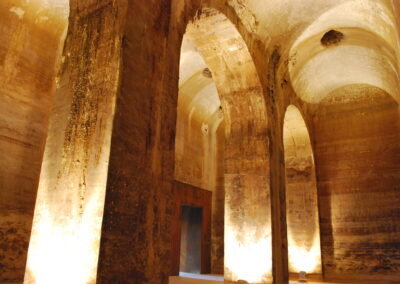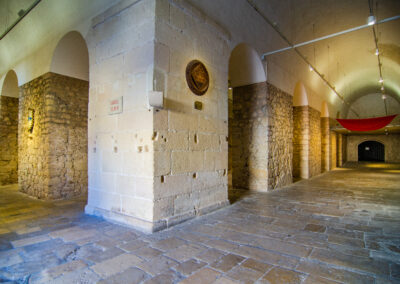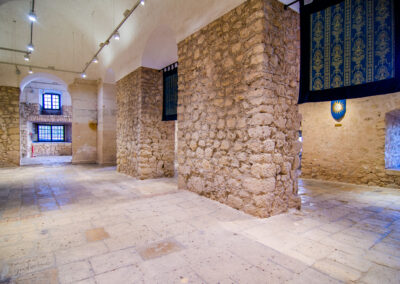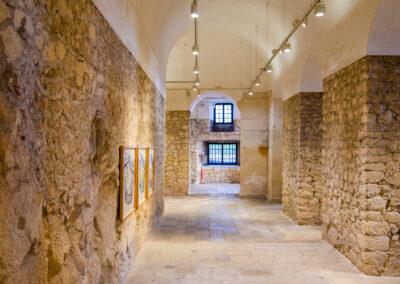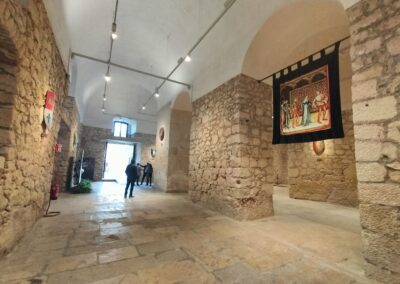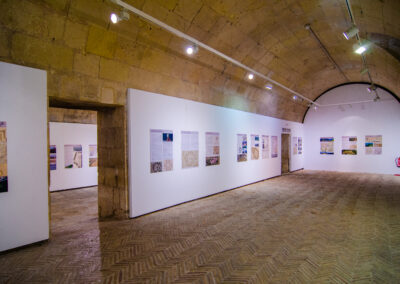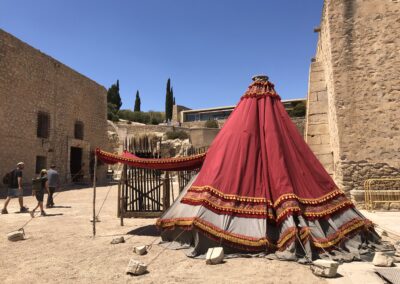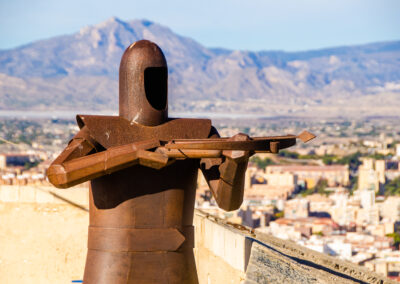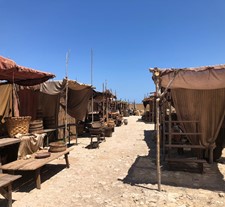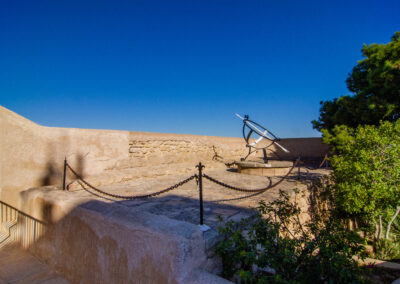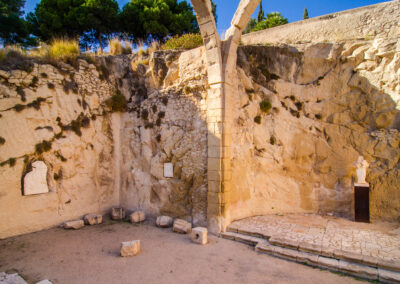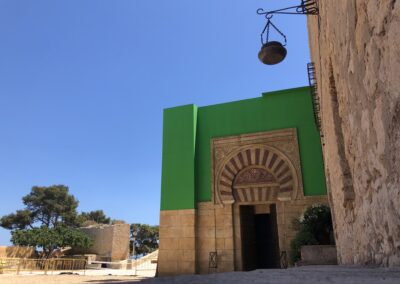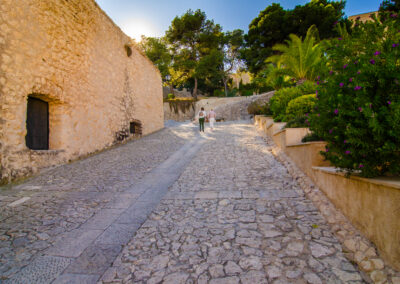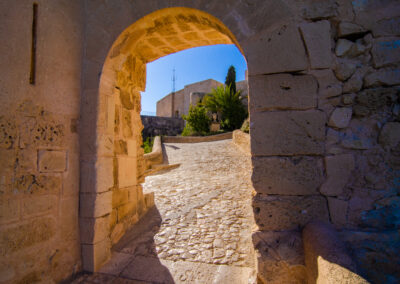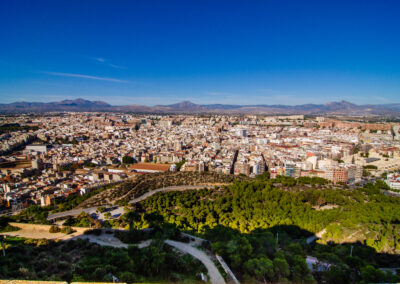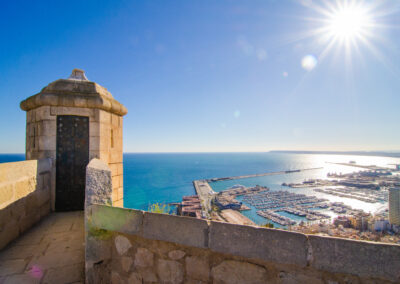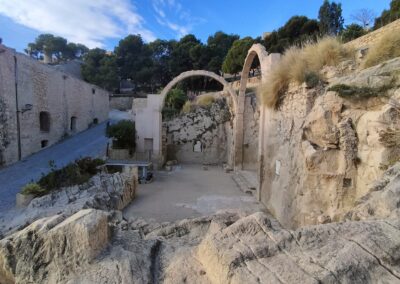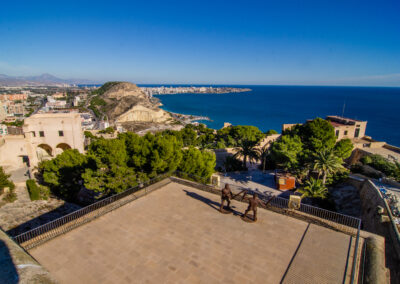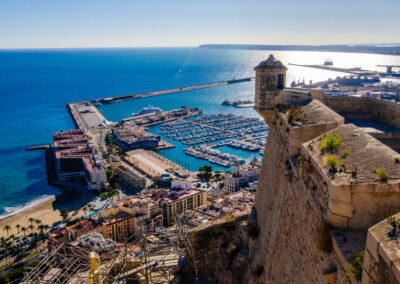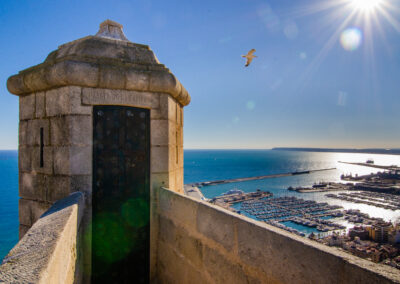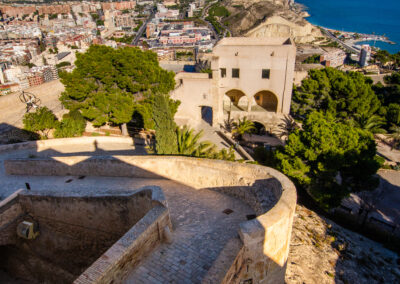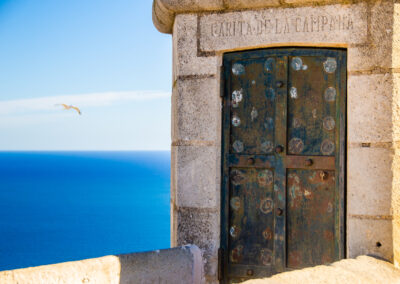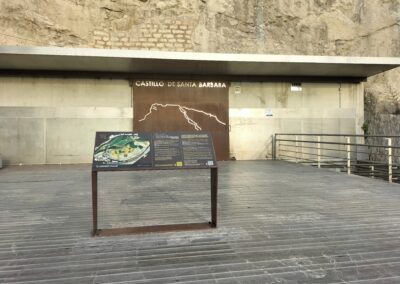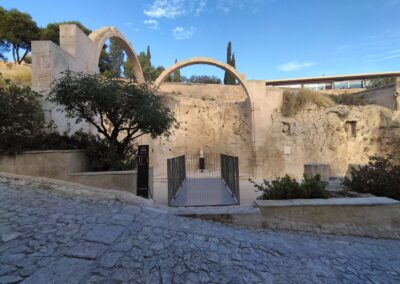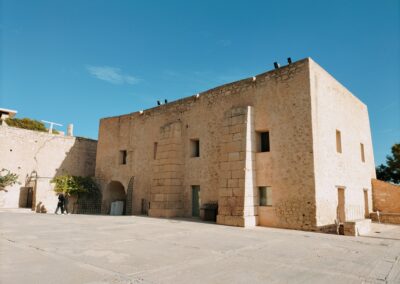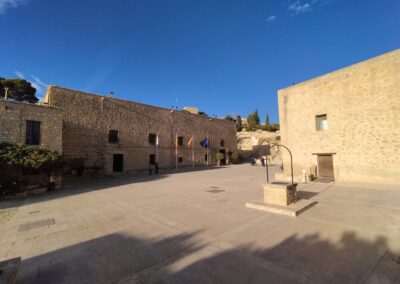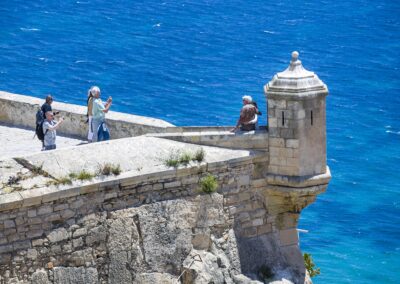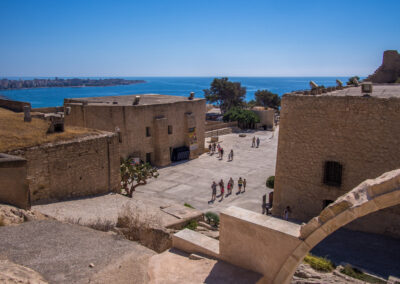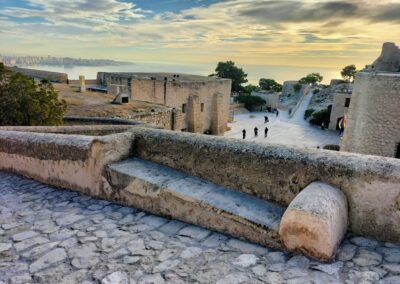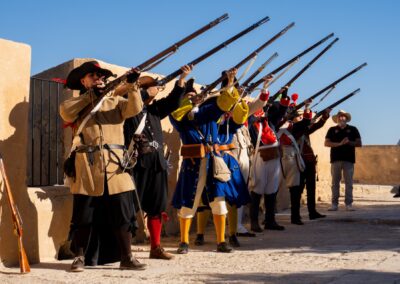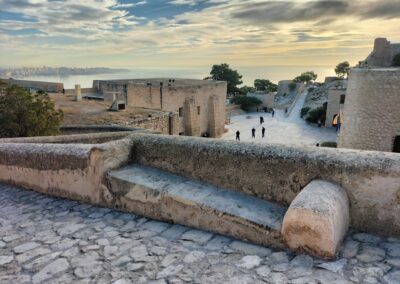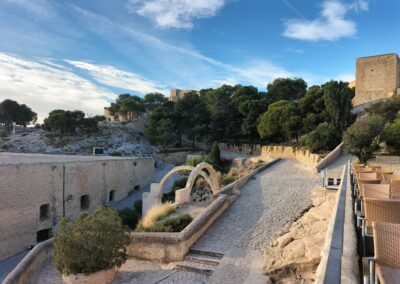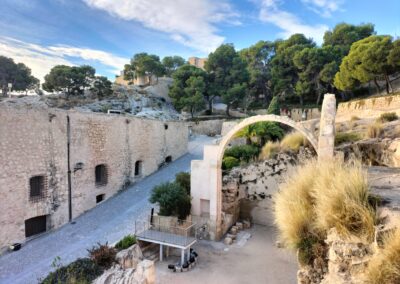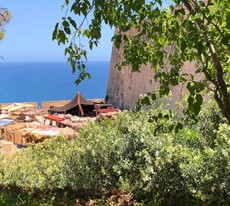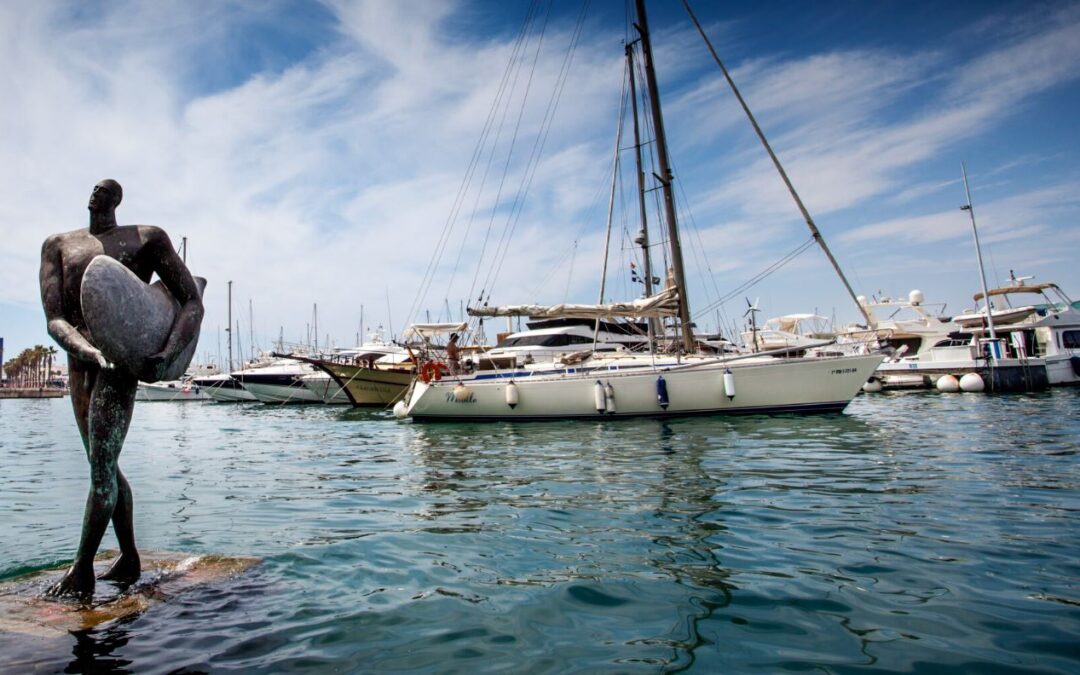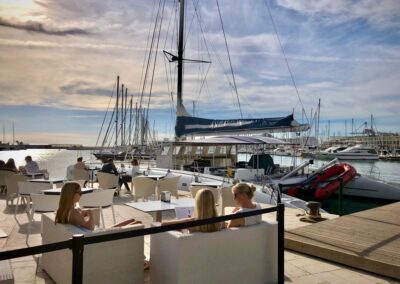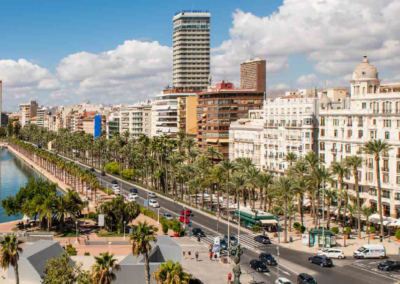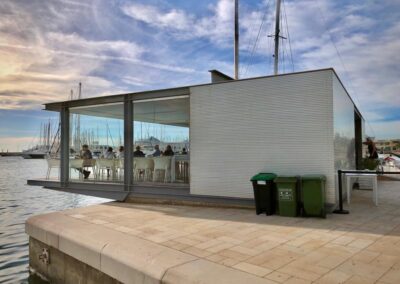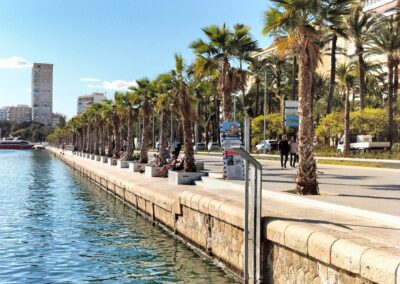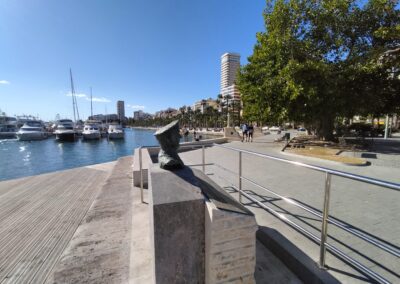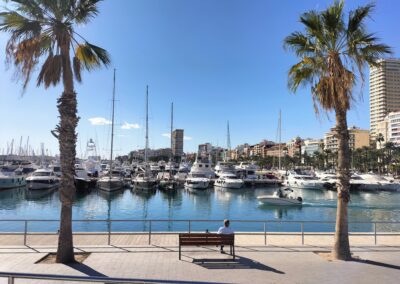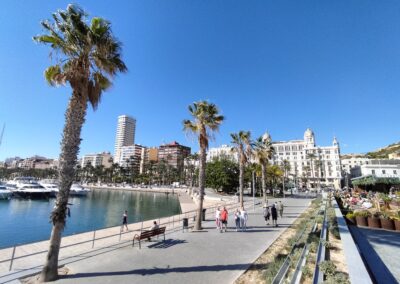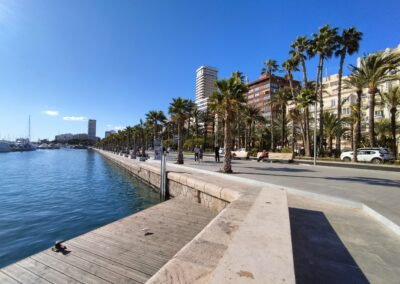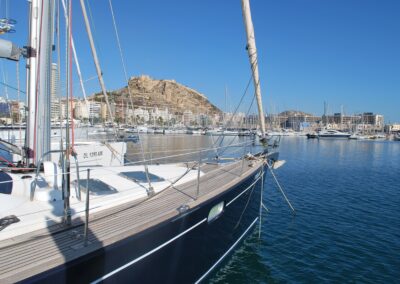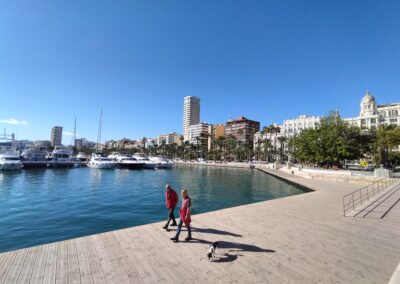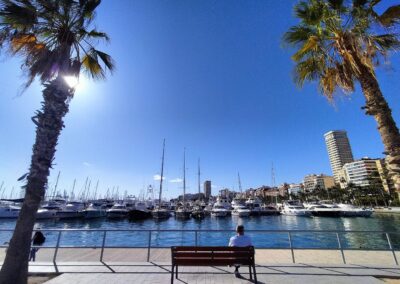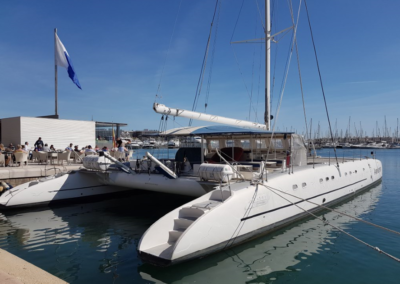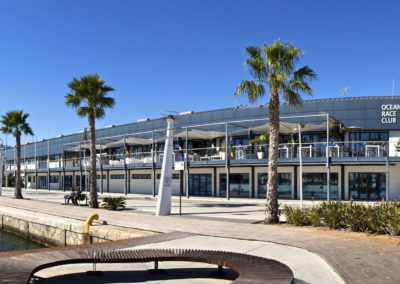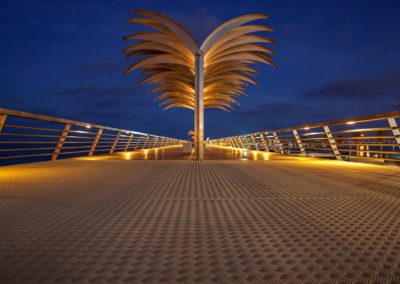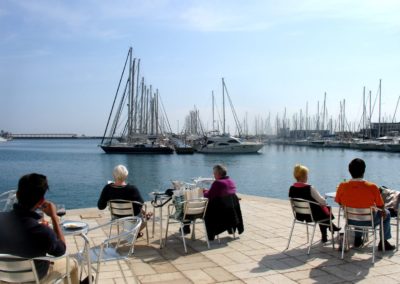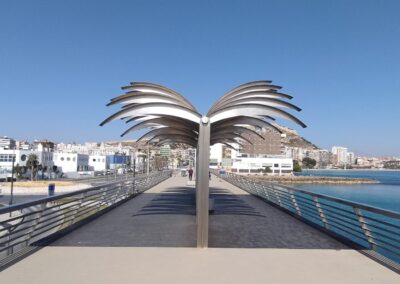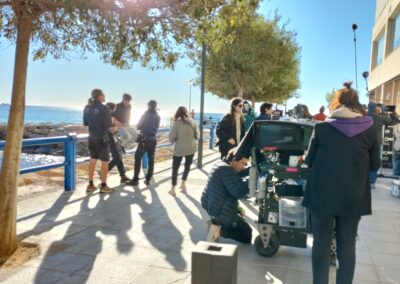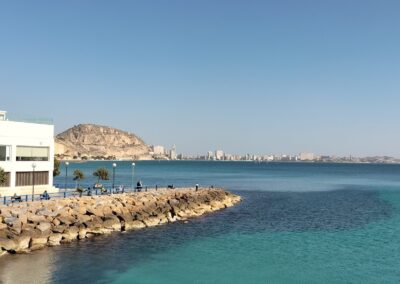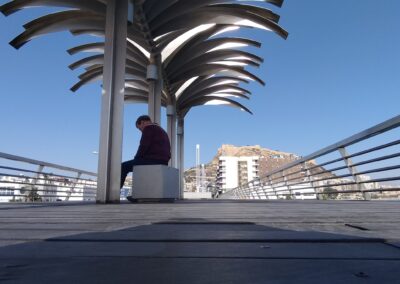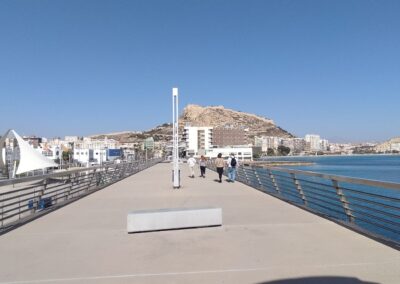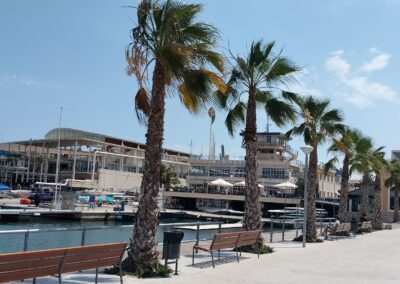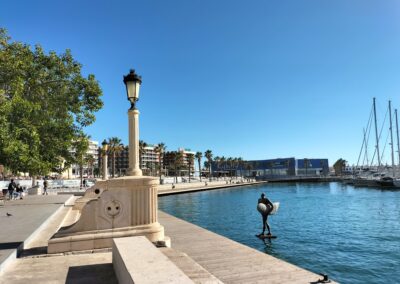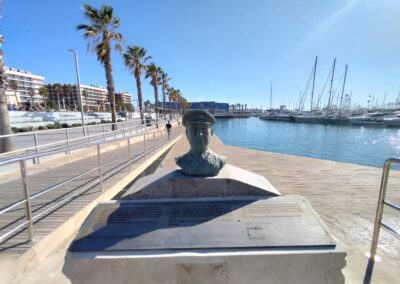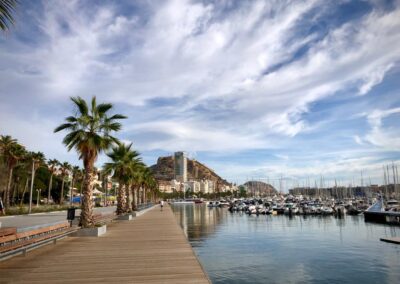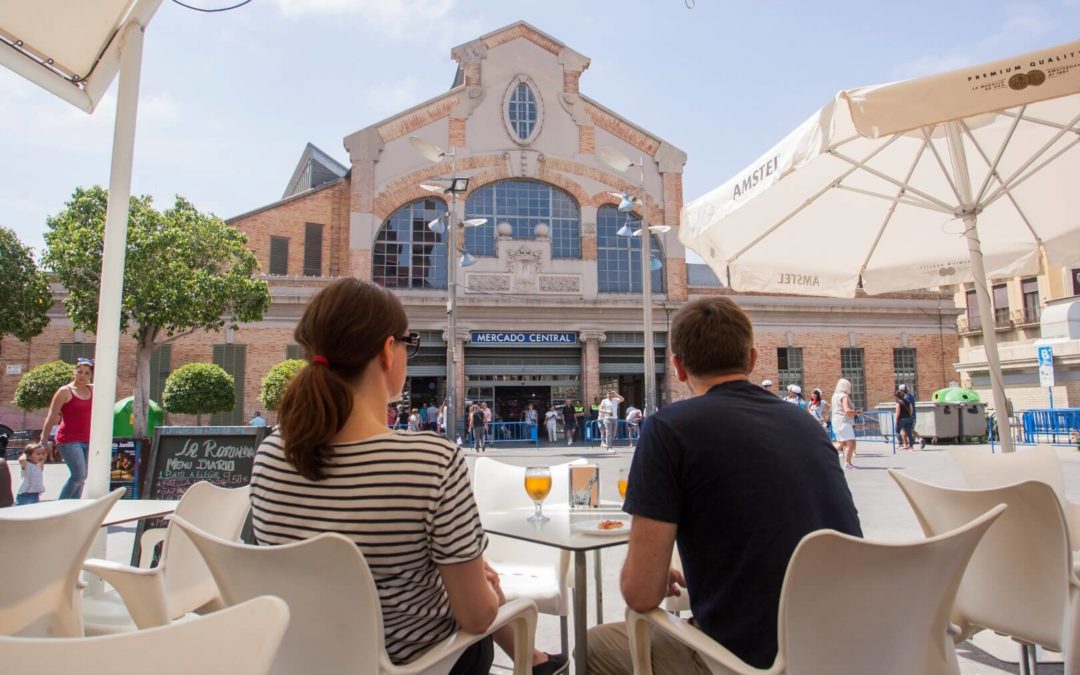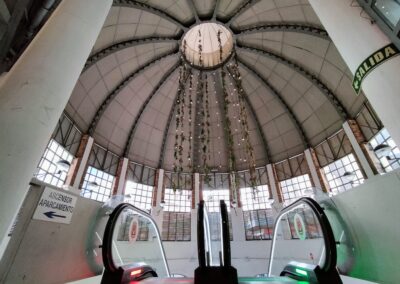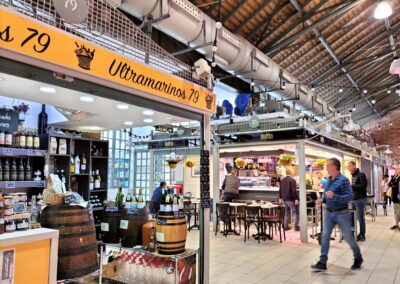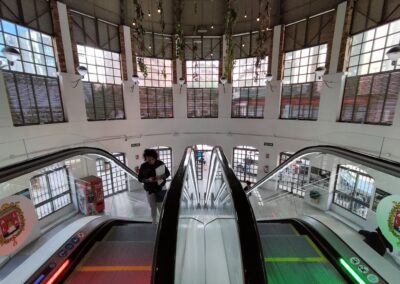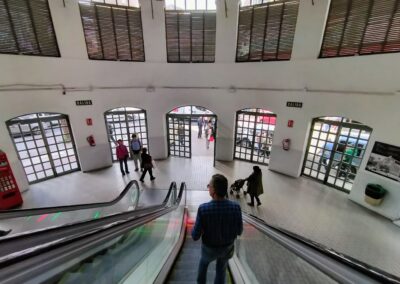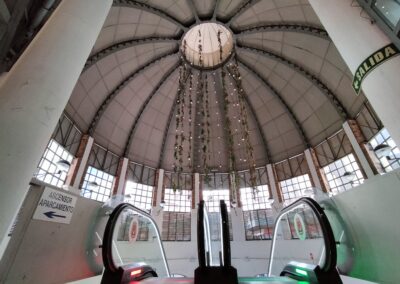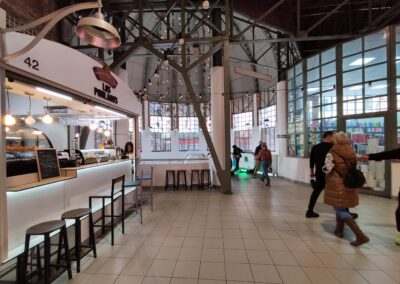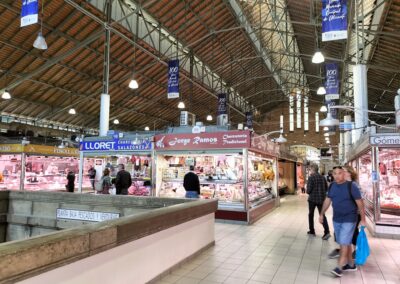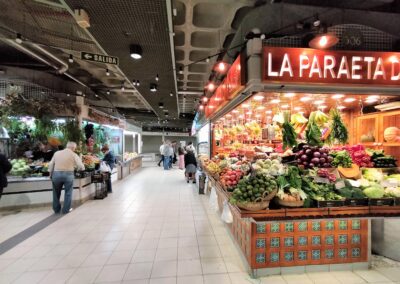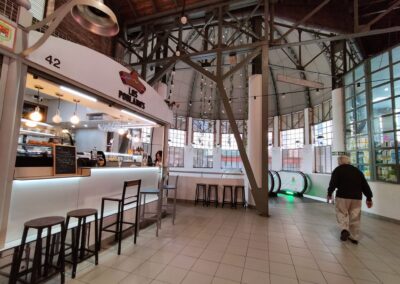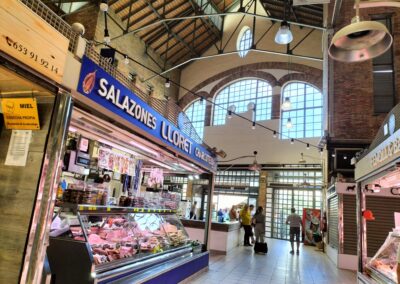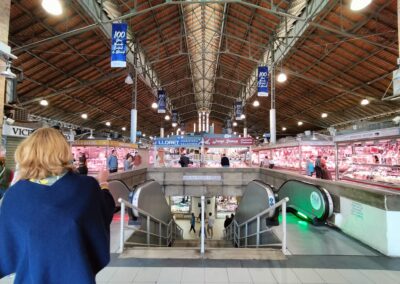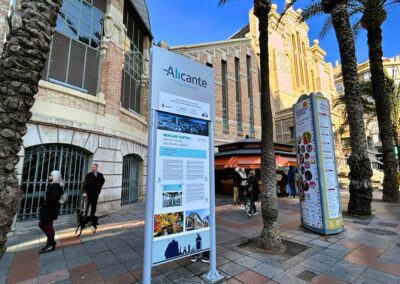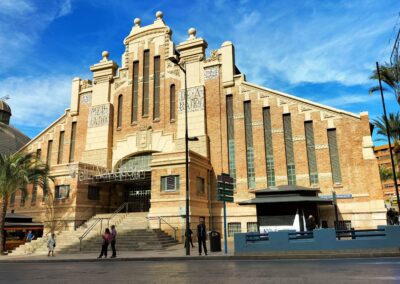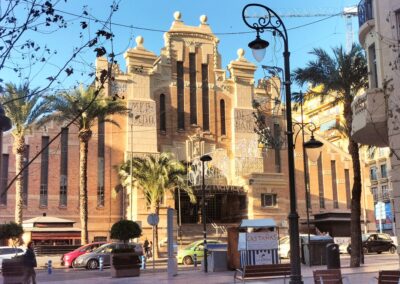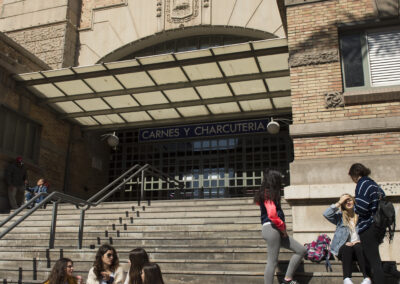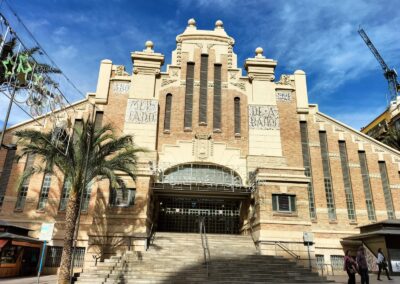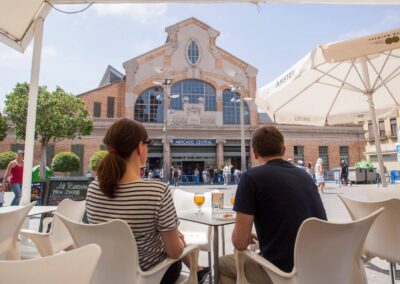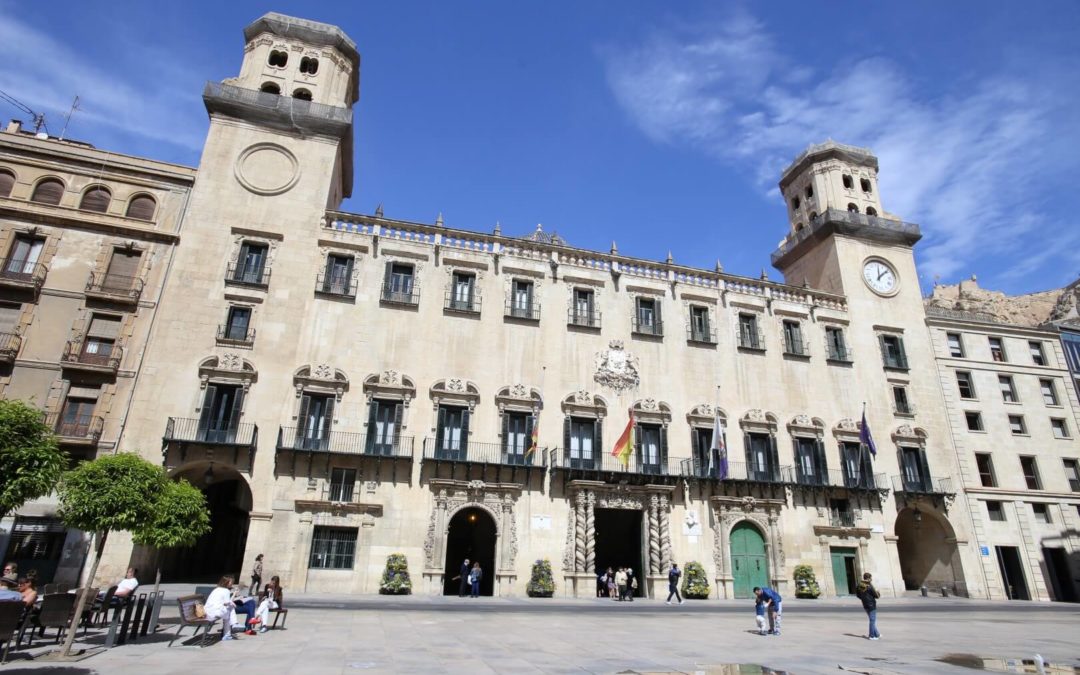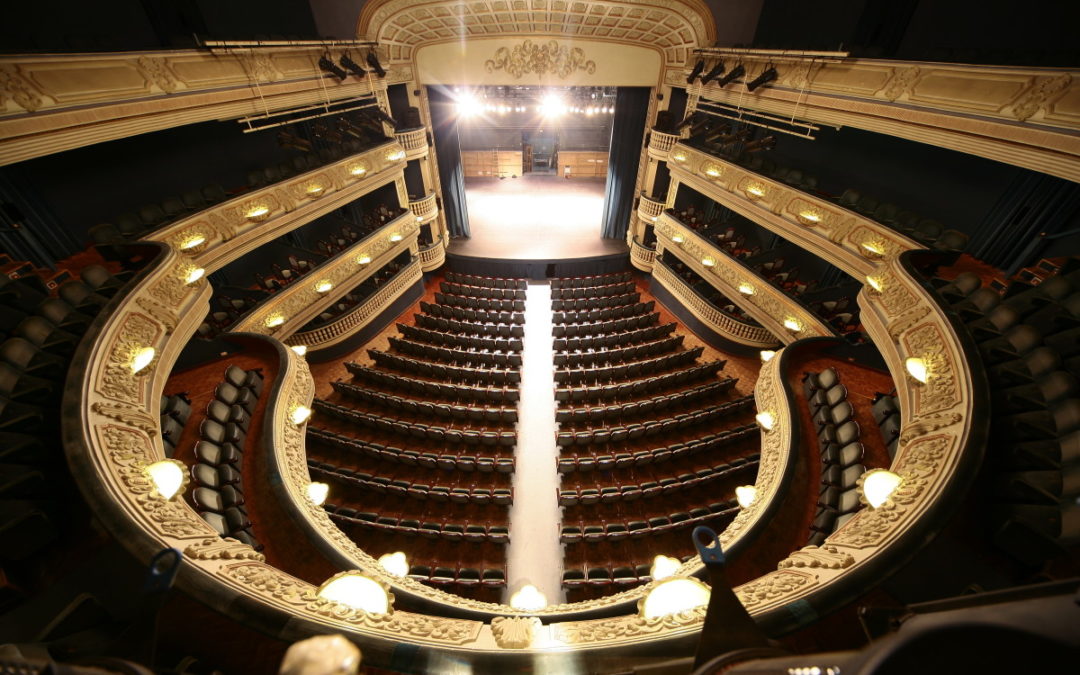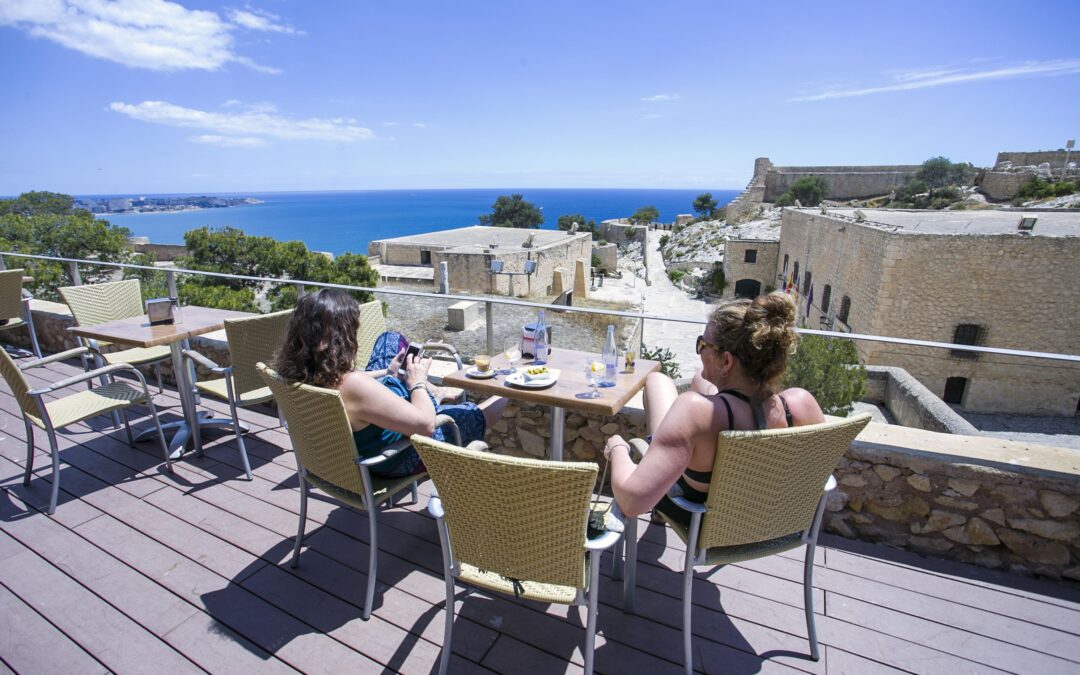
Santa Barbara Castle
Practical Information:
The imposing Castle of Santa Barbara is an architectural gem that offers a variety of both indoor and outdoor spaces ideal for film shoots. With an Arab origin and a history that includes its function as a prison during the Spanish Civil War, the castle provides an authentic and evocative setting for historical and war productions.
Among the available indoor spaces for filming are the Baluarte de los Ingleses, the Parque de Ingenieros, the Sala Noble, the Casa del Gobernador, the Aljibes, the Calabozos, the Salón Felipe II, and the Antiguo Cuerpo de la Tropa. Additionally, the Revellín del Bon Repós, dating back to the 18th century, can be used as a parking space for vehicles during shoots.
Access to Santa Bárbara Castle is through a tunnel excavated in the rock leading to modern elevators with LED-lit steel side panels, offering a cutting-edge aesthetic.
Regarding the exterior of the castle, the Patio de Armas, along with the ruins of the hermitage of Santa Bárbara, the Cuerpo de Guardia, and the Baluarte de la Reina, provide a stunning backdrop for various scenes. The terrace of the café-restaurant offers spectacular panoramic views of the sea and the parade ground, while the famous “Cara del Moro,” a rock formation on the mountainside, is an iconic feature of the city visible from Postiguet Beach.
With its combination of history, natural beauty, and versatile spaces, this emblematic location offers an unparalleled setting for film productions of all kinds.
Availability for Shoots:
- To facilitate logistics during shoots, it is essential to coordinate with the Alicante Film Office regarding filming conditions related to Santa Bárbara Castle.
- Open from Monday to Sunday.
Best days for shooting:
- Check with Alicante Film Office
Features and Facilities:
- Vehicle loading and unloading Parking area on site.
Available Spaces:
- Area for catering installation
- Areas for dressing rooms installation
- Toilets
- Restrooms Space for storing filming equipmen
Filming requests
All filming requests must be processed through the Alicante Film Office. View the FILMING PERMIT APPLICATION FORM
Email: info@alicantefilmoffice.com
Phone: (+34) 965 148 113 / (+34) 965 177 052
Documents and forms
A period of 30 days is necessary to process permits that require traffic interruptions and/or reservations of parking spaces for vehicles. This is because a report by Alicante’s City Council Department of Safety and Traffic is mandatory.
The forms to request permission for filming can be sent through this web page.

In accordance with Data Protection Legislation, Regulation (EU) 20161679 of 27 April 2016, we inform you that your personal data will be processed, under the responsibility of the Municipal Tourist Board, in order to implement or answer your request appropriately.
• The data will be processed exercising the powers attributed to the Municipal Tourist Board by Law 7/1985 of 2 April, Regulator of the Basis of the Local Regime, and by Law 39/2015 of 1 October, Common Administrative Procedure of Public Administrations, and will not be ceded to third parties, except in the case of legal obligation of assignment to other organisms.
• By means of a request addressed to the Municipal Tourist Board, you may exercise your rights of data access, rectification, deletion and portability as well as limitation or opposition to its processing.
• Additional information: You can consult additional and detailed information on Data Protection on our website:
https://www.alicantefilmoffice.com/en/privacy-policy/
Fees
Municipal fees for the use of public spaces for filming must be paid to the Alicante City Council through the Public Space Occupation Department. Regulations and rates vary depending on the type of production, filming locations, and duration at each site.
If you have any questions, feel free to contact us: info@alicantefilmoffice.com, Tel: (+34) 965 148 113.
View Public Space Occupation Fees
Address
Castillo de Santa Bárbara
Monte Benacantil s/n, Alicante 03001

